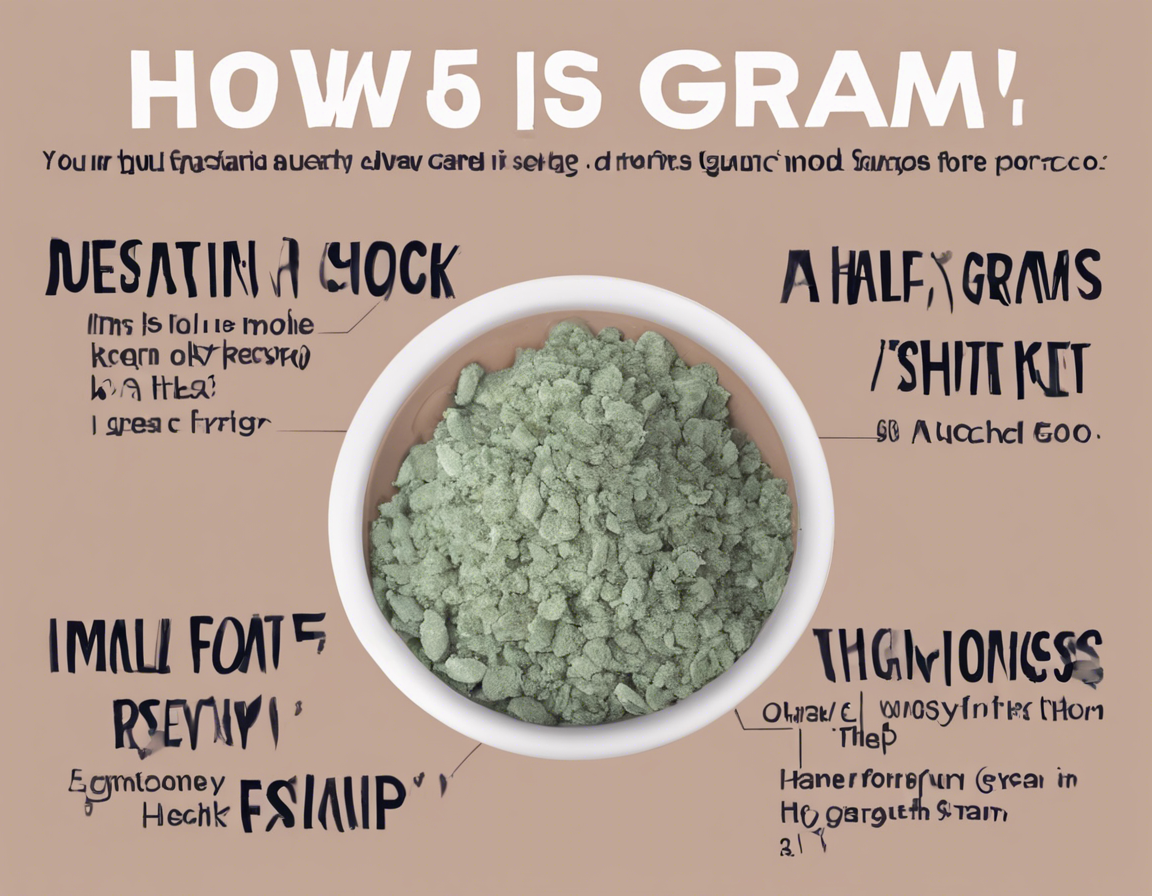When it comes to measuring weight, especially in the world of cooking and baking, it’s common to encounter different units of measurement. One such conversion that often arises is the conversion from ounces to grams. In this article, we will focus on the specific conversion of half an ounce to grams.
Understanding the Measurement Units
Before diving into the conversion itself, let’s have a quick overview of the two units involved – ounces and grams.
Ounces (oz)
Ounces, denoted as “oz,” are a unit of weight commonly used in the United States customary and British imperial systems of measurement. In these systems, an ounce is further subdivided into smaller units like ounces, pounds, and tons.
Grams (g)
Grams, on the other hand, are a metric unit of mass commonly used in most parts of the world. The metric system is based on powers of ten, making conversions between units relatively simple.
Converting Half an Ounce to Grams
To convert half an ounce to grams, we must first understand that 1 ounce is approximately equal to 28.3495 grams. Therefore, to find out how many grams are in half an ounce, we can use the following simple calculation:
0.5 ounces x 28.3495 grams/ounce = 14.17475 grams
So, half an ounce is equal to 14.17475 grams.
Why the Conversion Matters
Knowing how to convert between different units of weight is essential in various fields, including cooking, baking, scientific research, and international trade. Recipes from different parts of the world may use grams, ounces, or other units, requiring you to perform accurate conversions to achieve the desired results.
Tips for Converting Between Ounces and Grams
-
Use a reliable conversion chart: Keep a conversion chart handy for quick reference when you need to convert between ounces and grams.
-
Practice estimation: Develop a rough mental calculation to estimate conversions, which can be handy in everyday scenarios.
-
Remember key conversions: Memorize common conversion factors like the one between ounces and grams to speed up calculations.
Common Cooking Conversions Involving Ounces and Grams
In cooking and baking, accurate measurements are crucial for the success of a recipe. Here are some common conversions between ounces and grams that you might encounter:
Sugar:
- 1 ounce of sugar = 28.3495 grams
Flour:
- 1 ounce of flour = 28.3495 grams
Butter:
- 1 ounce of butter = 28.3495 grams
Water:
- 1 fluid ounce of water = 29.5735 grams
Frequently Asked Questions (FAQs)
- Can I use a kitchen scale for precise conversions between ounces and grams?
-
Yes, a kitchen scale is one of the most accurate tools for converting between ounces and grams, especially when dealing with ingredients that require precision.
-
Why is it important to use the correct units of measurement in recipes?
-
Using the correct units of measurement ensures that the recipe turns out as intended, both in terms of flavor and texture. Incorrect measurements can lead to disastrous culinary outcomes.
-
Are ounces and fluid ounces the same when it comes to converting to grams?
-
No, ounces and fluid ounces are not the same. Ounces measure weight, while fluid ounces measure volume. The conversion factor for fluid ounces to grams varies depending on the substance being measured.
-
Do I need to convert ounces to grams in all recipes?
-
It depends on the recipe. Some recipes may be forgiving of small measurement variations, while others, especially in baking, require precise measurements for success.
-
Is there a difference between avoirdupois ounces and troy ounces in terms of conversion to grams?
- Yes, there is a slight difference. Avoirdupois ounces are commonly used for measuring goods and produce, while troy ounces are used for precious metals. The conversion factor to grams differs slightly between the two types of ounces.
In conclusion, understanding how to convert between different units of measurement, such as ounces and grams, is a valuable skill in various settings. Whether you’re following a recipe from a different region or working on a scientific experiment, knowing how to perform accurate conversions can make a significant difference in the outcome. Remember to double-check your calculations and always use the appropriate units for the task at hand.
